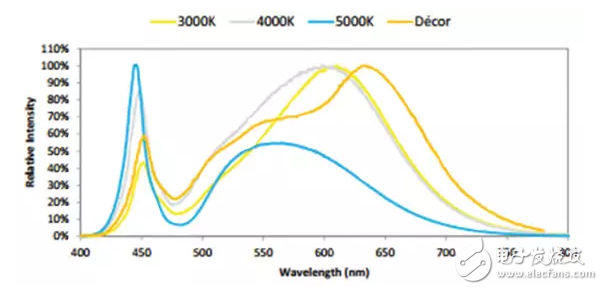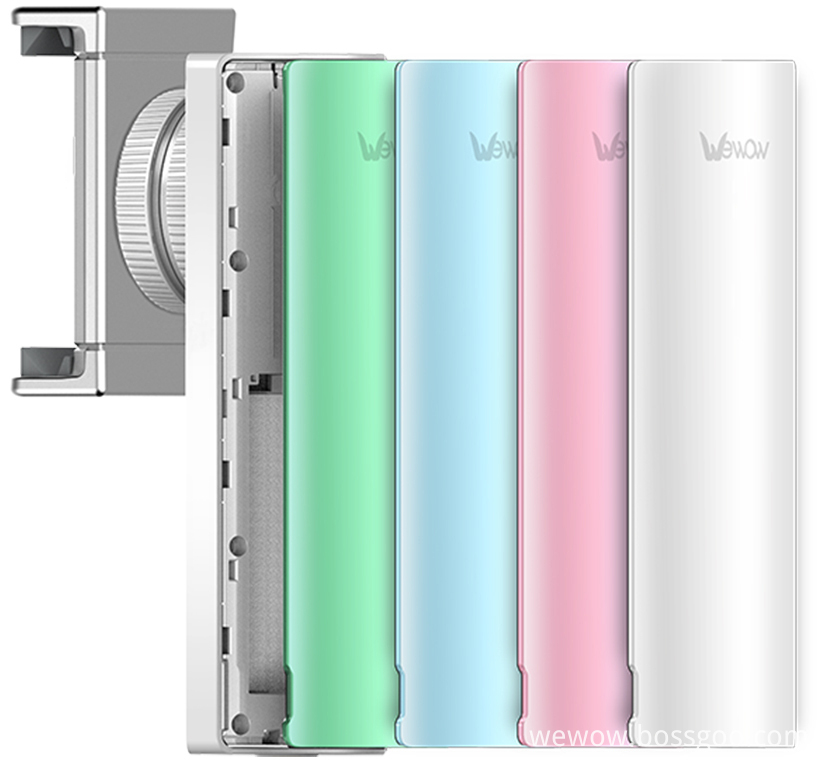LEDs outperform traditional lighting sources in many ways, including higher energy efficiency, longer life and smaller size. However, cost issues have been a headache for many lighting design engineers, which is why LED manufacturers continue to innovate and increase economies of scale. Chip-on-board (COB) light source modules are one of the latest packaging methods to help reduce costs. In this module, the LED chip is in the form of a semiconductor chip, which has neither a housing nor a connection, and is simply mounted directly on the PCB or, more generally, mounted on the substrate. Moreover, this form of packaging brings many related advantages, such as more flexible design, better light distribution, and simpler manufacturing process.
Designers want to seriously consider whether to use COB LEDs in their next-generation lighting designs for other reasons. In a recent report from Research and Markets, analysts pointed out that COB LEDs are wide-area light emitters (and therefore available for highway and street lighting) with three major advantages: better color mixing, better Lighting effects and low thermal resistance requirements. The company's analysts point out that these COB LEDs also offer higher power density, more efficient heat dissipation and require less board space, making them ideal for a wide range of general lighting applications.
Now let's examine several COB LED products, including Bridgelux's VeroTM, Sharp's Zenigata, and Cree's CXA products, to see how these products can save energy and reduce costs while simplifying lighting design.
Bridgelux (Livermore, CA) introduced the high-performance Vero series COB LED arrays last year (Figure 1): nominal luminous flux of 120 lm/W and minimum average luminous flux of 110 lm/W. According to reports, this improvement makes it about 11% more energy efficient than its predecessor. The series features a four-sided illumination (LES) configuration with a wide operating temperature range. In addition, the Vero array offers two SDCMs (Color Matching Standard Deviation) and three SDCM color control options for high-precision color control and uniform illumination.

Figure 1: The Bridgelux Vero Series offers 70, 80, 90, and 97 Décor CRI options. (The warm white spectrum is 3,000 K 80 CRI, the natural white light is 4,000 K 80 CRI, and the cool white light is 5,000 K 70 CRI. Thanks to Intellident for providing data).
According to Bridgelux, high-precision color control "improves light quality by achieving greater uniformity and uniformity between adjacent sources." In addition, the Vero series exceeds the California Energy Commission's R9 requirements for lighting fixtures.
According to Bridgelux, all form factor devices based on a 3,000 K, 80 CRI configuration with nominal current drive have an average output performance of 120 lm/W. However, designers can achieve output performance of up to 140 lm/W with low current drive.
In addition, the Vero platform enables plug-and-play connections via on-board connector ports, allowing lighting manufacturers to make solderless electrical connections and easy installation, thus helping to simplify the manufacturing process. Specific advantages include low cost, fast time to market, and lower inventory requirements.
The following are the main technical specifications:
Lumen output performance range is 240 - 16,400 lumens
CCT is available between 2,700 and 5,000 K
CRI optional 70, 80, 90 and 97 CRI Decor products
Three SDCM standards for 2,700 K to 4,000 K CCT and two SDCM options
Reliable operation with up to 2 times rated current drive
Radial chip boosts lumen density and beam control
Thermally isolated pad
No solder connector port with plug-and-play connectivity and field upgrades
Logo and 2D barcode are located on the upper side of the product
Other benefits include compatibility with a wide range of standard drivers (350 mA current increments) and optics, making designs more flexible and wider choices, thus reducing development cycles, reducing costs and reducing annoying inventory issues.
Zenigata COB technology from Sharp Electronics Corp. also simplifies design. The series includes three variants: Mega, Mini and PeTIte Zenigata. Sharp's design changed the metal substrate to a ceramic substrate, which according to the company's "best heat dissipation and no discoloration." That is to say, the lumen output can be kept constant, but there is no color change. The uniform LES simplifies the optical design while improving the quality of the light in a variety of different applications.
The Sharp COB module is described in detail below.
The Mega Zenigata 50 - 80 W module is energy efficient and is designed for high power lighting applications. It is reported that high-brightness LEDs can eliminate the problem of uneven light source around multiple LEDs in a lighting fixture. These modules allow only one LED to be used in one fixture, saving space and eliminating uneven illumination. The Mega Zenigata series is available in 20 & TImes; 24, including both high CRI and low CRI modules with minimum CRI performance of 90 and 80 respectively. These COB LEDs can be used for indoor and outdoor lighting, including architectural lighting, spotlights, spotlights, recessed downlights, venue and object lighting.
Sharp offers the 15 W Mini Zenigata COB Series for mid-size applications, with a round 8 mm LES that simplifies lens and reflector design. According to Sharp, the Mini Zenigata LED is packaged at 15 x 12 x 1.6 mm and has a surface area of ​​about one-third of the Mega product and reduces the area of ​​illumination. Applications include indoor and outdoor lighting, architectural lighting, reading lights, mobile lighting, signal and sign lights, and venue and object lighting.
For low-power products, the 4 - 6 W PeTIte Zenigata COB LED (Figure 2) is designed for applications that require smaller lenses, such as small spotlights or track lights. These LEDs are available in a small 8 x 12 mm package with a 4 mm LES. With the 9.6 V product, a step-down DC/DC converter can be used in MR16 lamps (usually requiring 12 V), while higher voltage (40 V) components simplify the drive design of the line voltage GU10 bulb. These LEDs can be used in designs that require extremely compact lenses, including MR16 replacement lamps, GU10 replacement lamps, small track lights, small projection lamps, chandeliers, small reading lights, and small glare lamps. The high CRI series (minimum CRI 90) produces 300 - 395 lumens of brightness.

Figure 2: Sharp PeTIte Zenigata COB LEDs are available in a small 8 x 12 mm package with a 4 mm LES. When using a 9.6 V product, a step-down DC/DC converter can be used in MR16 lamps (usually requiring 12 V), while higher voltage (40 V) components simplify the drive design of line-voltage powered GU10 bulbs Sharp provides data).
Cree Inc. (Durham, NC) has further expanded its CXA lineup with the recent introduction of the CXA3070 LED array of over 11,000 lumens at 85°C. Designed to simplify design and reduce total system cost, the high-light output LED array delivers 134 lm/W at 85°C and offers a CRI option between 70 and 95. This series of LEDs is characterized and binned at 85°C and supports ANSI white and EasyWhite color temperatures (2,700 K - 5,000 K).
The CXA3070 LED array features high lumen output and high energy efficiency for system performance from 8,000 to over 10,000 lumens. This means that the product can be used in high lumen output applications such as high bay lights and ceramic metal halide replacement lamps.
The relative luminous flux values ​​of the CXA 3070 array (Figure 3 below) provided by the supplier refer to the ratio of the measured value of the CXA3070 during steady operation under specified conditions to the measured luminous flux during the binning (TJ = 85°C, 1, Pulse measurement at 925 mA).
For example, at TC = 25°C, IF = 1,300 mA steady state, the relative luminous flux ratio is 80% (as shown in the chart). If the measured value of the CXA3070 LED during the binning period is 8,500 lm, it can output 6,800 lm (8,500 * 0.8) under stable operation with TC = 25 °C and IF = 1,300 mA.

Figure 3: The relative luminous flux value is determined based on the ratio of the measured value of the CXA3070 during steady operation under specified conditions to the luminous flux measured during the binning (pulse measured at TJ = 85 ° C, 1,925 mA) Measured values) (by Cree providing data).
Key specifications for the Cree CXA3070 array:
Supports fourth- and second-order EasyWhite binning at 2,700 K, 3,000 K, 3,500 K, 4,000 K, and 5,000 K CCT.
Supports ANSI white light binning at 4,000 K and 5,000 K CCT
Minimum CRI optional 70 or 80
Forward voltage: 38.5 V
85°C binning and characterization
Maximum drive current: 2,800 mA
115° viewing angle, uniform chromaticity distribution
Top solder connection
All in all, cost will be a big problem for lighting engineers, but as the average selling price of LEDs decreases, COB LEDs will be more and more accepted by designers because they find that these devices have great potential and have better Energy efficiency, greater flexibility and better light distribution ultimately benefit lighting system manufacturers and end users.
Traditionally, stabilizer is heavy and too big to take. Fashion stabilizer can solve all these problems. It`s small and light.

Fashion gimbal stabilizer are designed as pocket size, portable and easy to take. You can carry it as easy as smartphone!

Wewow focusing on handheld stabilizer is a technology company which does R & D independently. With Wenpod series product released, the company achieved the industry's praise and quickly became the leader of the smart stabilizer industry.
Our service
1. Reply to you within 24 hours.
2. Already sample: within 1-2days.
3. Shipping date: within 24 hours once get the payment.
4. 12 months warranty.
5. After-sales service, solve within 3 working dates.
If you have any questions, please contact with us directly.
Wewow appreciates domestic and international business relationship!
Fashion Stabilizer,Fashion Stabilize Regulator,Professional Fashion Stabilizer,Voltage Stabilizer
GUANGZHOU WEWOW ELECTRONIC CO., LTD. , https://www.stabilizers.pl